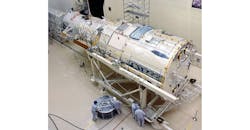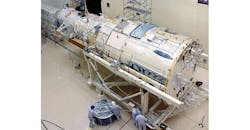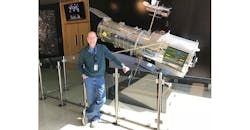Hubble Still Scanning Space After 30 Years
Space has often been called “the final frontier” for a human species with grandiose long-term plans to colonize the universe. Before settlements can be initiated as “nearby” as the Moon or Mars, however, more must be known about space and, for at least 30 years, the Hubble Space Telescope (HST) has delivered images of deep space far beyond this solar system. The technological marvel was designed and constructed at the Lockheed Martin Space site in Sunnyvale, CA (Fig. 1) as part of efforts to learn more about what awaits the human species in deep space.
The HST was originally designed as a space-based orbiting observatory that would provide at least 15 years of high-performance service. Several maintenance visits by space-shuttle astronauts have been necessary during the earlier years of its lifetime to repair malfunctioning subsystems. As the telescope ages it continues to perform well; additional service missions have not been planned and may not be needed due to the ingenuity and adaptability of some of the space telescope’s developers.
For example, the HST is constructed with six gyroscopes that position the telescope in terms of desired direction and area of deep space to scan. The total number of gyroscopes was designed with some redundancy, assuming that the space telescope could be positioned accurately even when only three of the six gyroscopes were functional. Unfortunately, as gyroscopes are electro-mechanical subsystems subject to extreme wear, especially over an extended service life of more than 15 years, maintaining even three of the six gyroscopes in full operational condition appeared to be unlikely to the HST project engineers at Lockheed Martin. So, the engineers needed another approach to positioning the space satellite.
A steering solution developed by a team led by Mike Wentz, HST lead optical telescope system engineer uses available gyros in combination with the fine guidance sensors (FGS) on the Hubble (Fig. 2). By working both devices together, the HST can be steered with as little as one gyro. “Essentially, we created a hybrid mode,” Wentz explained. “The gyros are the front-seat drivers—they do most of the work getting the telescope into position. Once that’s done, the fine guidance sensors step in to keep Hubble perfectly still and locked on the guide starts.” The method has been tested and is ready for use to keep the HST operational well beyond its current 30-year lifetime.
Lockheed Martin, lockheedmartin.com


